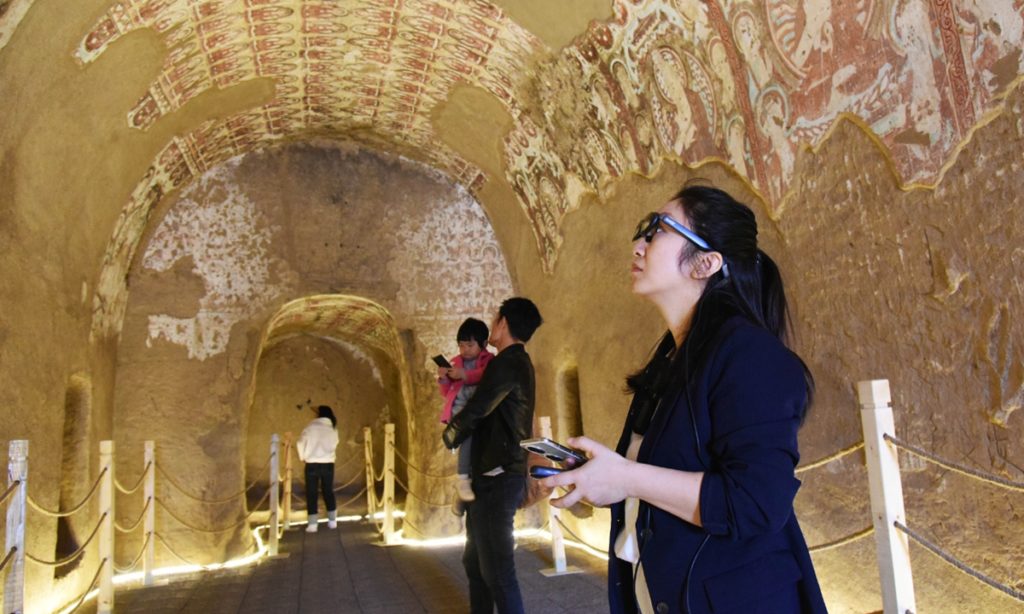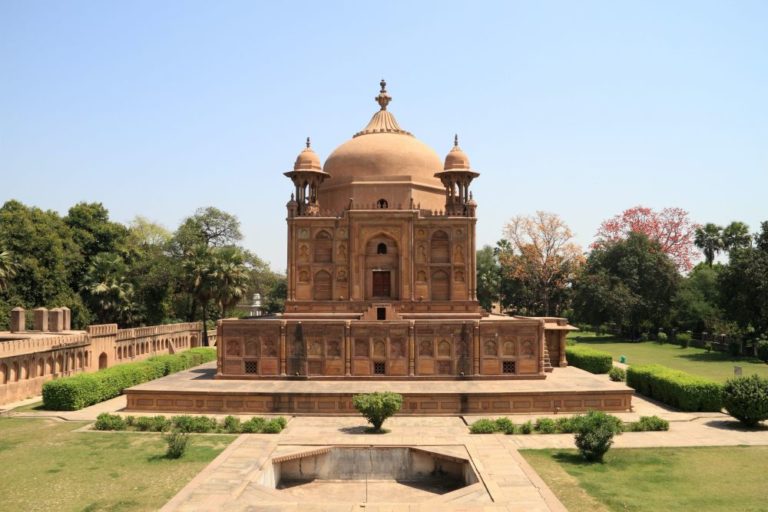The Ya’er Lake Grottoes in Turpan, Northwest China, have reopened to the public with a high-tech twist—thanks to augmented reality (AR) technology that digitally revives faded Buddhist murals and inscriptions dating back over 1,500 years.

Part of the Jiaohe Ruins—an ancient Silk Road hub and UNESCO World Heritage site—the grottoes are renowned for intricate wall paintings and rare inscriptions in Chinese and Sogdian, an ancient Iranian language once spoken across Central Asia.
After five years of meticulous digital work, the grottoes now feature an immersive AR exhibition that allows visitors to see the restored murals in vivid colour and detail through smart glasses. “We’ve brought back missing lines and colours, giving visitors a true sense of the original artwork,” said Wang Jiandong, director of the Cultural Relics Management Institute of the Jiaohe Ruins.
Tourists are already captivated. “The visuals are incredibly lifelike,” said visitor Wang Juan, describing the experience as a journey through history enhanced by modern technology.
The highlight of the project is the No. 4 cave—home to 110 square metres of murals filled with Buddha motifs. Researchers used 3D and high-definition scanning to analyse the cave’s structure and artwork. Variations in the figures’ orientations and postures were digitally reconstructed to build a virtual archive.
Carved into cliffs and layered in two tiers, the Ya’er Lake Grottoes consist of 22 caves. Before reopening, the site underwent structural reinforcement due to its remote and fragile location. Despite its historical richness, the site remains lesser known than others, like the famed Dunhuang Grottoes.
“These murals reflect a fusion of artistic styles from different dynasties,” said historian Fang Gang, calling the site a vivid testament to the cultural exchange that once thrived along the Silk Road.
Today, Turpan is fast becoming a cultural tourism hotspot, with 14 documented grotto complexes and over 400 caves across the region. As digital preservation expands, the Ya’er Lake Grottoes are set to become a cornerstone of heritage innovation in Xinjiang—where the ancient meets the augmented.




